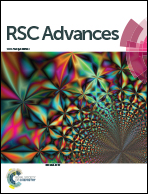Recognition and binding of voltage-dependent anion channel-1 with ATP and NADH by spectroscopic analysis and molecular docking
Abstract
The beta-barrel mitochondrial outer membrane protein voltage-dependent anion channel-1 (VDAC-1) plays an important role in the regulation of mitochondrial functions and the control of apoptosis. It appears to be a convergence point for a diversity of cell survival and cell death signals, which was mediated by its association with various ligands and proteins. In this study, the binding behavior of VDAC-1 with adenosine triphosphate (ATP) and the reduced form of nicotinamide adenine dinucleotide (NADH) were studied by spectroscopic analysis and molecular docking. The results showed that ATP and NADH bound to VDAC-1 in equimolar amounts. The association constants of VDAC-1 with ATP and NADH were 1.93 × 104 and 1.15 × 104 L mol−1 at 20 °C, respectively. The data from the spectroscopic analysis and molecular docking studies revealed that ATP and NADH could bind to the nucleotide binding sites of VDAC-1 through electrostatic interactions. The structural difference and flexible feature in ligands could affect the binding affinity to VDAC-1, which provides useful help in the design and discovery of lead compounds for the treatment of VDAC-1 related diseases.


 Please wait while we load your content...
Please wait while we load your content...